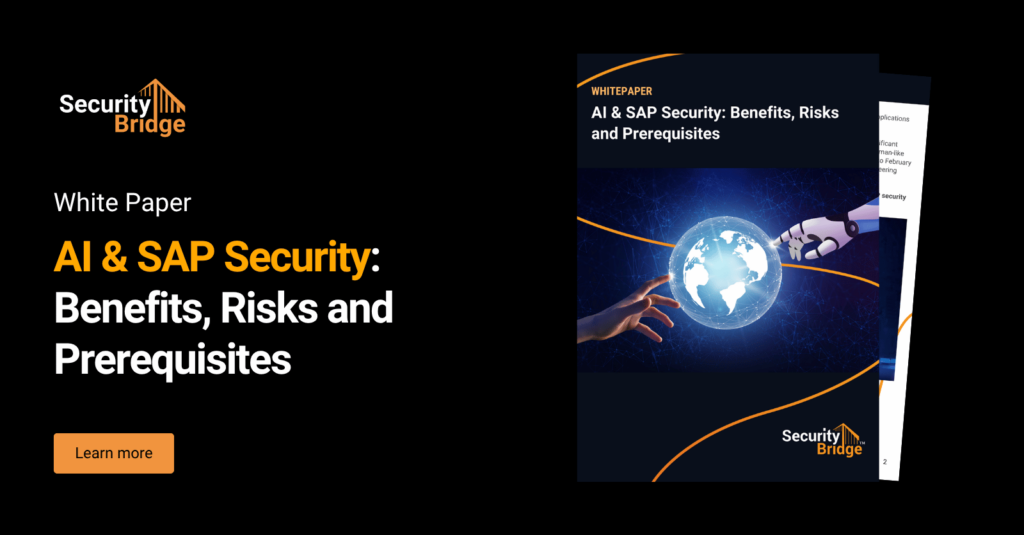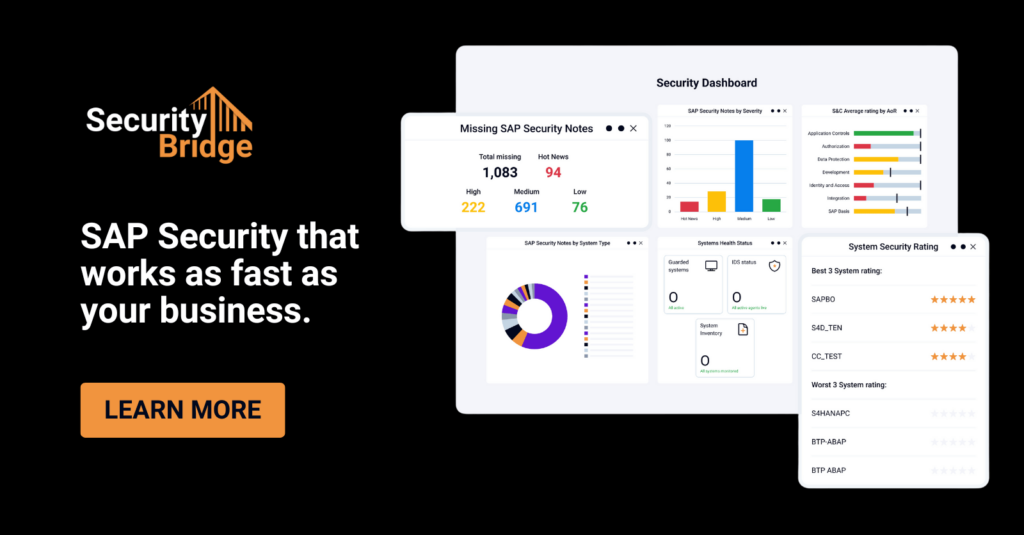
SAP Security in the Age of AI: Shifting the Advantage from Attackers to Defenders

Chapters
Share Article
Let's Talk SAP Security
Have questions about SAP Security? We’re here to help. Contact Us
Enterprise systems powered by SAP are among the most valuable and complex assets in the digital ecosystem. They run core business functions—finance, supply chains, HR—and therefore represent highly attractive targets for cybercriminals. For years, defending these environments has been a painstaking, sometimes even manual effort, while attackers have rapidly adopted new tools and techniques to discover and exploit vulnerabilities faster than defenders can respond.
The rise of Artificial Intelligence (AI) has supercharged this imbalance—at least for now. Attackers are leveraging AI to automate reconnaissance, analyze ABAP or kernel code at scale, and even craft exploits using generative models. But, as defenders begin to adopt AI-powered security tooling, we are witnessing a crucial turning point: a future where AI could shift power back into the hands of defenders.
The Current State: Attackers Are Winning the Speed Game
Today’s attackers need less and less SAP expertise. With AI-assisted analysis tools, they can:
- Scan in mass and intelligently for misconfigured SAP Gateways, Message Servers, or known or new SAP vulnerabilities or misconfigurations,
- Analyze large volumes of ABAP, JavaScript, or kernel code for vulnerabilities,
- Use language models to generate and test potential exploits,
- Automate lateral movement across SAP landscapes.
This shift has dramatically reduced the cost and time required to launch sophisticated SAP-targeted attacks. The once-specialized knowledge required to penetrate SAP environments can now be effectively “outsourced” to AI.
A Turning Point: AI for Defensive SAP Security
While the immediate future may seem grim sometimes, with events like cve-2025-31324, AI holds the potential to equalize—and eventually invert—the attacker/defender power dynamic. Forward-thinking SAP security teams can and will already start tinkering with and harnessing AI to enhance their capabilities across several dimensions. Some not-too-far-away developments I foresee:
Proactive Vulnerability Management
AI-powered code analysis tools can:
- More intelligently Scan custom ABAP code for insecure patterns
- Recommend secure coding alternatives
- Automate patch impact analysis and testing
This allows defenders to faster and better identify and fix vulnerabilities before they are exploited.
Behavioral Threat Detection
Traditional SAP security monitoring relies on signatures and static rules. AI, on the other hand, can:
- Better and deeper detect anomalies in user behavior
- Learn and adapt to evolving attack techniques
By training on massive datasets, AI can uncover early-stage intrusions that humans and legacy tools would miss.
Automated Response and Orchestration
AI can support real-time responses to threats:
- Recommend remediation steps based on attack patterns
- Prioritize alerts with contextual understanding
- Trigger automated lockdowns when privilege escalation is detected
This reduces dwell time and allows defenders to respond within seconds—not hours or days.
The Long-Term Outlook: A Defender’s Advantage
AI isn’t just a tool; it’s a force multiplier. And as it matures, defenders—also those in SAP security—stand to gain the most:
- Scale: AI enables one security analyst to protect thousands of endpoints and SAP instances.
- Precision: Machine learning improves over time, minimizing false positives and surfacing real threats.
- Speed: Automated threat detection and remediation compress the vulnerability-to-patch window and exploit-to-remediation window to near real-time.
- Accessibility: Tools that once required elite expertise are now becoming user-friendly and embedded in modern SAP security platforms.
While attackers currently enjoy the upper hand due to faster AI adoption and a still fragmented defense landscape of many SAP customers, this advantage in my view is temporary. As more enterprises integrate AI into their security workflows and SAP vendors embed AI in native tooling, I believe we can expect a future where defenders no longer play catch-up—they set the pace.
Conclusion: From Reaction to Resilience
AI is ushering in a new era of SAP security—one filled with both risk and opportunity. Today already, and certainly in the near future, attackers are exploiting AI to scale their efforts and outpace defenders. But the tide will turn. With the right investments and mindset, AI can help SAP defenders shift from reactive to proactive, from overwhelmed to empowered.
The future of SAP security won’t only be decided by who has the most sophisticated tools—it will be decided by who adapts fastest. And with AI on their side, defenders are poised to take back the advantage.


